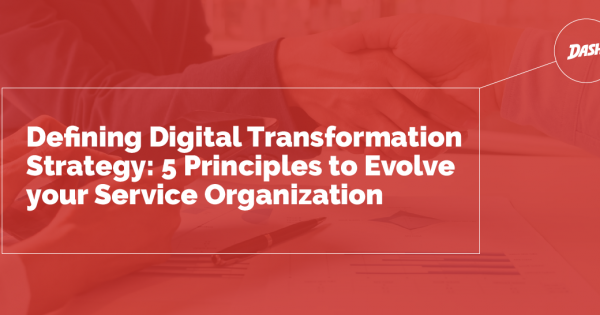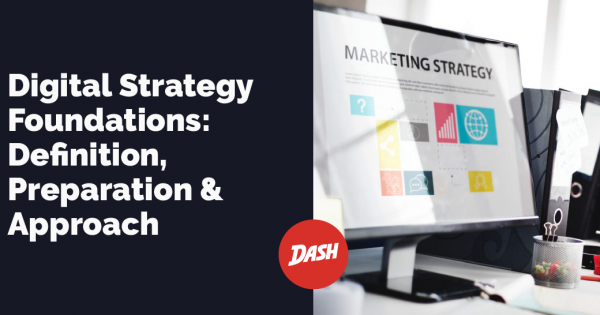As we talked about in our post on how to set your brand apart, a competitive positioning strategy helps you gain traction in the marketplace and eventually garner more of the market share. Positioning is the foundation of all strategic marketing, including targeted marketing, which helps focus your marketing scope to specific groups of people. Among those strategies, concentrated targeting goes even further with your marketing efforts focused on smaller, niche audiences.
No matter which type of professional service organization you are, target marketing is the next step—after positioning and differentiation—in making your ads more effective by focusing on a few smaller segments or market niches. Some companies such as clothing and car manufacturers decide to target multiple segments such as teens, women, men, or high-income earners. But for professional services organizations developing a competitive positioning strategy, it’s often advantageous to focus on one segment and, if that proves successful, add more.

With its abbreviations, acronyms, and multiple meanings, we know the jargon associated with digital marketing can get confusing. Understanding the difference between a concentrated targeting strategy, differentiated and undifferentiated marketing, and micromarketing often trips up even the most digitally savvy amongst us. In this post, we’ll give a quick overview of what a concentrated targeting strategy is and then break down for you how what’s known as the “marketing mix” can help you influence clients and customers to purchase your services.
What is a Concentrated Targeting Strategy?
When drugstore giant CVS redesigned 1200 of its 6200 stores, they did it to specifically help customers who were constantly multitasking—women. They widened aisles, installed better lighting, shortened the wait time for prescriptions, and added more beauty products. The company recognized that women make up 80% of its customers, so it positioned itself as the pharmacy of choice for busy women. Its efforts won it a “Retailer of the Year” award from Women’s Wear Daily.
That’s a perfect example of a concentrated targeting strategy.
Organizations that adopt a concentrated target strategy choose to focus their marketing efforts on only one narrowly defined and specific market segment. It’s a strategy that’s especially effective for organizations with limited resources because:
- Selling to multiple markets is often less efficient than identifying various segments to find the one target market that sets them apart.
- Geographic, demographic, behavioral, and psychographic factors can be used as starting points for dividing a broader market into segments.
- Once a segment is identified, an organization can weigh factors like accessibility, sustainability, and actionability of that segment. This helps determine if the firm can maintain a strong position within the segment.

From a practical point of view, choosing one targeted market helps you determine if a given segment will be profitable in the long-term and if it’s the best segment to concentrate on.
The Marketing Mix
A solid competitive positioning strategy doesn’t just appear out of thin air. It takes organizing, strategizing, and a multitude of other considerations to create a plan that adds value. The marketing mix is the foundation on which most modern marketing strategies are built. But what, exactly, is it, and why do so many people rely on it?
A brief history: In 1960 American marketing professor E. Jerome McCarthy wrote a book entitled Basic Marketing: A Managerial Approach, in which he proposed the concept of the 4Ps or marketing mix.

The original 4Ps: product, place, price, and promotion, were in 1981 increased by Booms and Bitner, two academics who added three more Ps: physical evidence, people, and processes.
Any organization hoping to gain a competitive advantage must revisit the 7Ps as customers, markets, and services evolve. Let’s do a quick synopsis on each P:
- Product, as it relates to professional service organizations, is the service or experience you offer. It must meet market demands and satisfy or exceed the expectations of your clients or customers.
- Place refers to where you choose to market or sell your service. It could be a very small geographic region or a global offering. When choosing a place to market your service, it’s essential to take into consideration where the competition is marketing.
- Price reflects the perceived value of your service. It’s best determined not by trying to be the lowest cost option but by segmenting your audience and establishing rates that the market will bear.
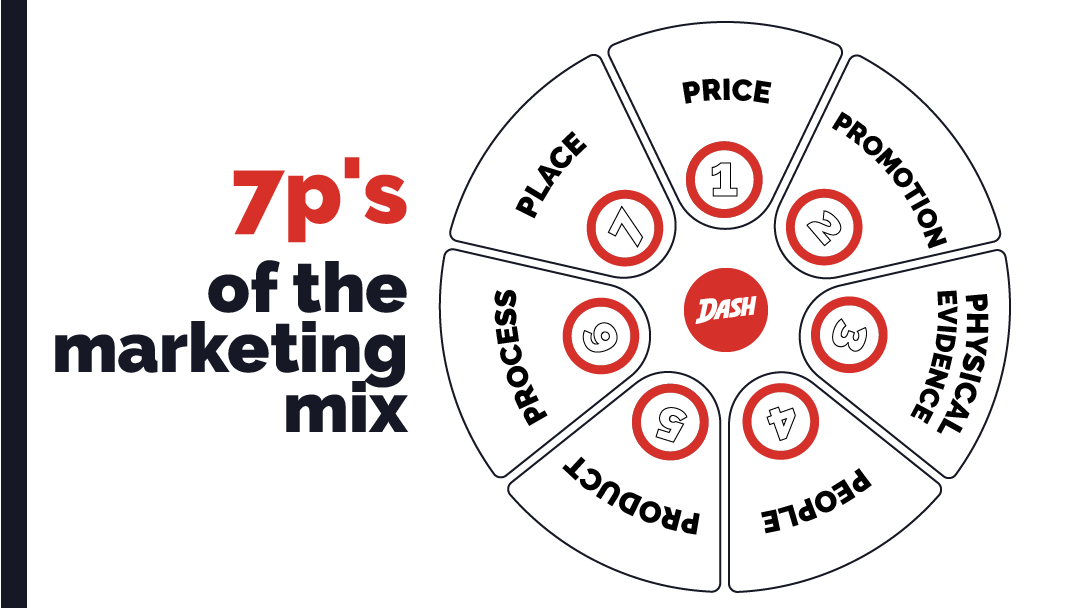
- Promotion is all your marketing, advertising, and sales techniques, including on and offline methods. How you communicate with your targeted audience and how you promote your services will directly impact your brand’s success. Professional service organizations that occupy a crowded marketplace can use segmentation to ensure their services are being promoted to the right people.
- Physical evidence is proof of the existence of your brand. It can be visual aspects like a website, logo, office building, or social media presence your audience sees before actually engaging your services. Physical evidence brings a legitimacy to your brand that sets you apart from the competition and shows you as authentic, informed, and a thought leader in your industry.
- People refers to your staff, employees, or anyone directly or indirectly involved in the business side of your organization. Surrounding yourself with the right people is integral to your business surviving and thriving.
- Processes are the series of actions you take to deliver your services to your customers and clients. It includes everything from managing customer relationships to payment systems—anything that maximizes benefits and value for your clients.

By analyzing and optimizing your competitive positioning strategy according to the 7Ps, you’ll ensure your concentrated targeting strategy is as concrete as possible and keeps your customers satisfied.
1. Undifferentiated Marketing
Also called mass marketing, in an undifferentiated marketing strategy, you use the same message for all segments of the market. You craft your message to appeal to everyone. While this approach works for some brands, for a professional service organization, it can prevent them from standing out from the competition.
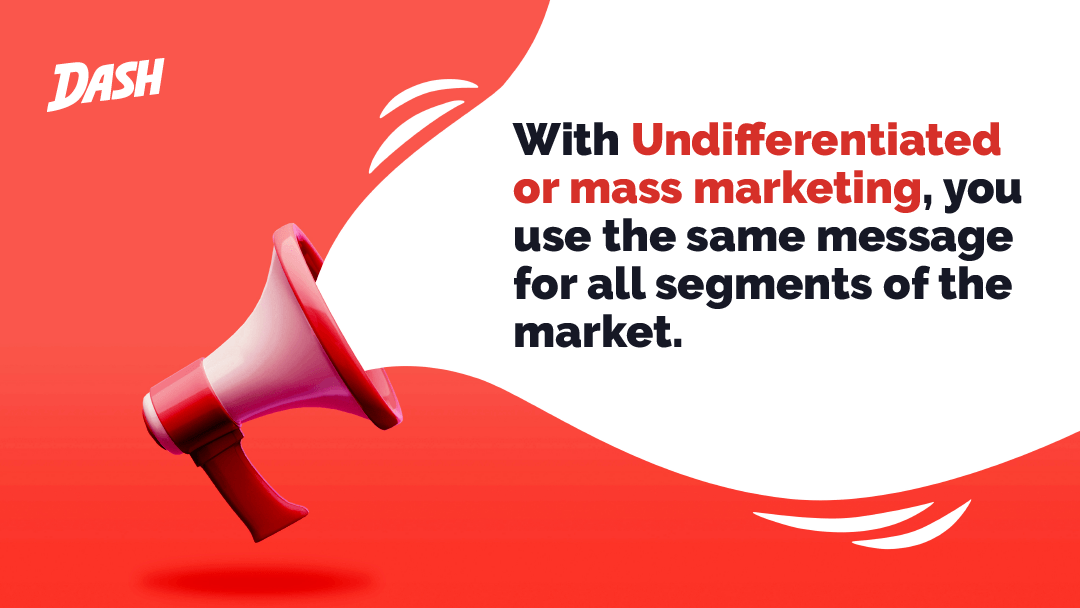
2. Differentiated Marketing
This is what we also call segmented marketing. Your organization creates marketing campaigns that appeal to two or more market segments or target groups. For example, if you specialize in maritime law, you might target both boat and yacht owners as well as commercial shippers. Each differentiated marketing strategy uses different messages for different segments.

3. Concentrated Marketing
Concentrated marketing is often referred to as niche marketing. It targets one specific market segment or audience and is geared to smaller groups of people.
To better understand these three types of marketing strategies, it helps to look at one business type from each perspective.
- A restaurant using differentiated marketing can appeal to families by offering kid-friendly meals, to college students and businesspeople by marketing happy hours, and to seniors with early-bird specials and discounts.
- The same restaurant using a concentrated marketing strategy would market its convenient location to residents within 20 kilometers of the restaurant.
- Using an undifferentiated marketing strategy, our hypothetical restaurant would highlight its open-to-all grand opening.
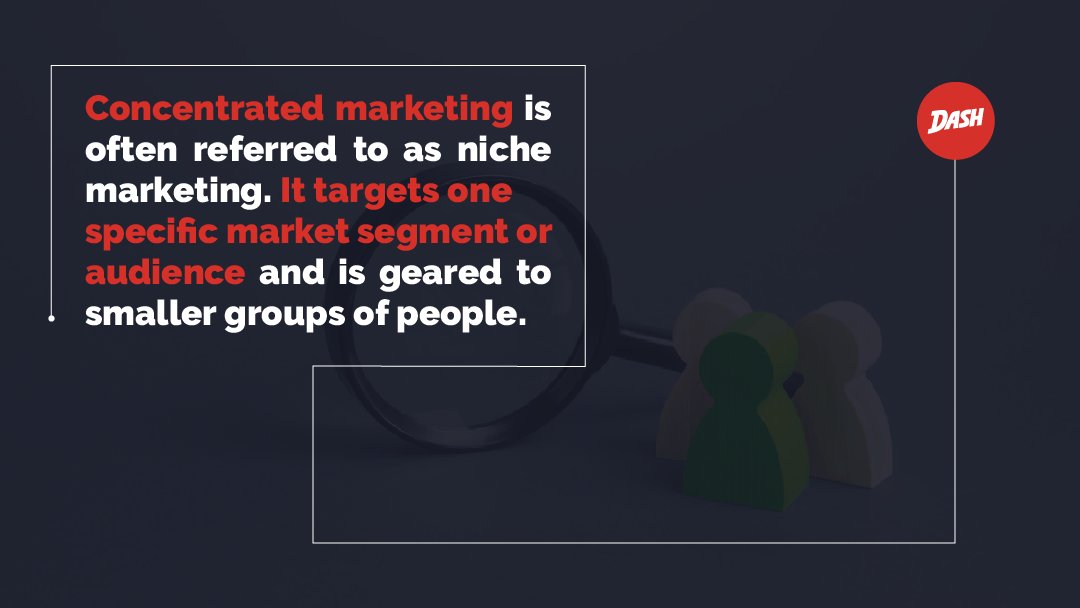
4. Micromarketing
While micromarketing and concentrated marketing appear to be the same, micromarketing goes deeper, marketing services directly to targeted groups of people based on highly specific information. This type of marketing is designed to meet the demands of a small or limited section of the market drawn from your niche market. Using collected data, you can determine the specific needs, likes, and dislikes of your target segments. This makes matching clients with your services a lot easier.

Done right, micromarketing is a highly successful approach because customers and clients develop a sense of being important on a more personal level. A great example of this is the real estate property industry. An agent who deals in properties in a specific price range has a deep knowledge of the demands and requirements of others who can afford to buy property in that range. One major company that’s successfully used micromarketing strategies is Proctor & Gamble which launched its Pantene Relaxed & Natural shampoo and conditioner specifically to black women.

There are three great advantages to using a micromarketing strategy:
- It’s highly targeted, which allows you to direct your efforts toward a specific market segment whose needs you thoroughly understand.
- Because microtargeting strategies allow you to handle the market, growth is user-generated, and word-of-mouth referrals occur organically.
- The costs associated with micromarketing campaigns tend to be relatively less expensive than other types.
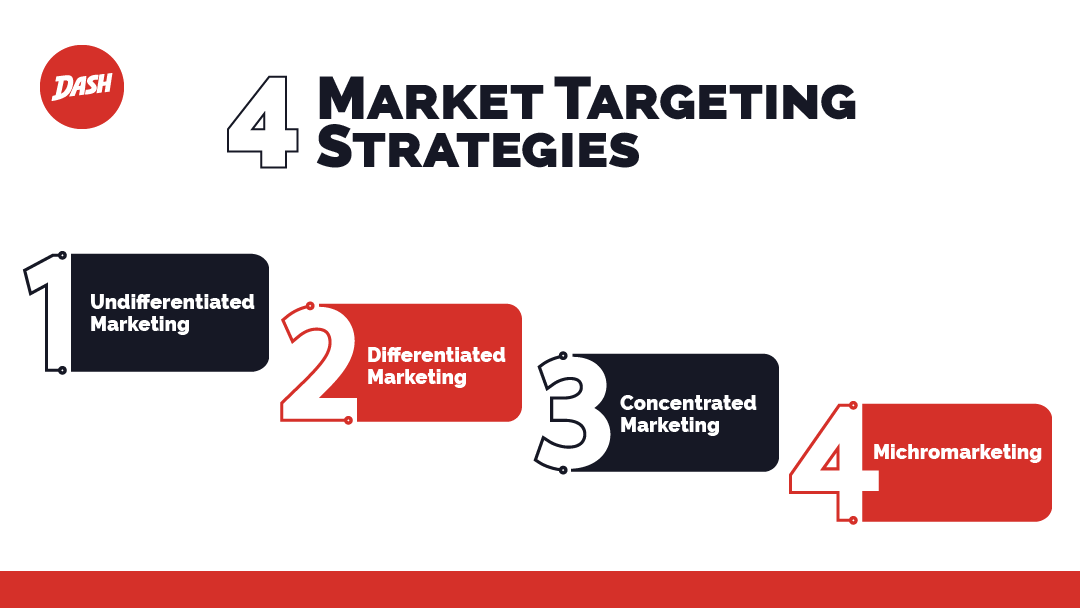
Applying the Marketing Mix to Target Segments
Once your professional services organization has defined its target market and identified its competitive position, you’re ready to create your own customized marketing mix, bringing a specific, targeted group of clients a service with superior value. All 7Ps must be considered, and the different elements must be blended to create a concentrated targeting strategy that helps you emphasize the competitive advantage you have over other similar organizations.
For example, an accounting firm that’s developed proprietary software for small businesses in the tourist industry might build a 4P marketing mix like this:
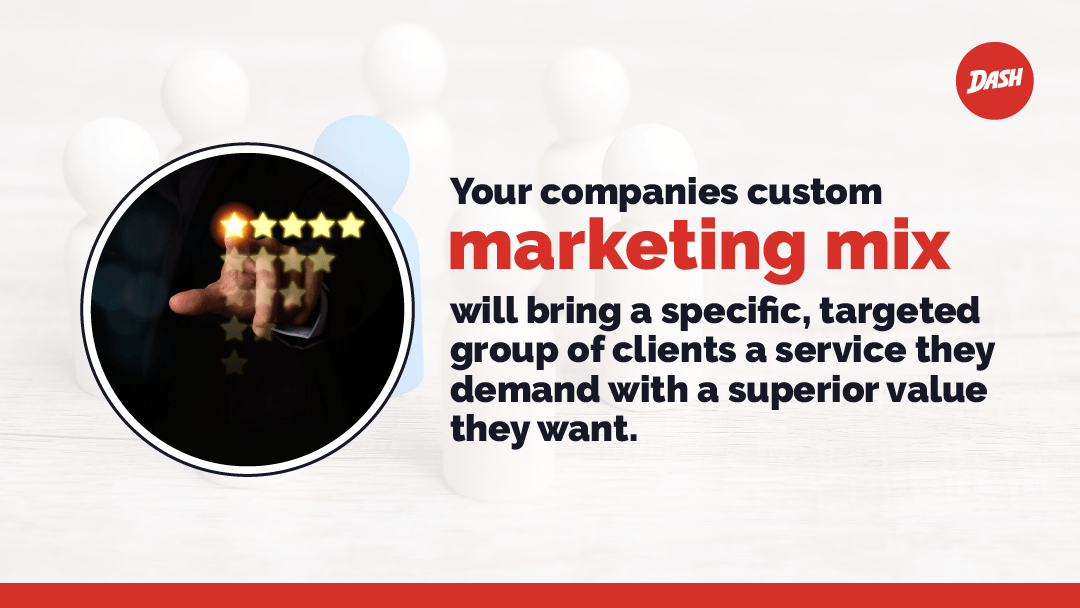
- Price. As the firm is offering a new product with unique features no other firm has, its services can be priced slightly higher than its competitors’ services.
- Place. Since the software is designed specially for those in tourism, it’s marketed to specific locations in a city, region, or state.
- Product/Service. The software uses the latest technologies and is designed to help clients maximize profits and limit taxes.
- Promotion. Your organization offers discounts to businesses that own one or more properties and uses customer testimonials in marketing campaigns.
This marketing mix offers several competitive advantages, including a unique selling point that allows you to charge a higher fee. It differentiates you from your competitors and gives you a leg up in landing these highly specialized clients.

Concentrated Targeting Strategy to Best the Competition
If there’s one disadvantage to a concentrated targeting strategy it’s that it focuses on the demand of the segment. But as long as the demand is strong, so, too, will your position in the market be. To ensure demand is and remains strong:
- Choose a specific target market that offers superior value to clients and then conduct a thorough market analysis of that market.
- Select a specific geographic region in which to market your specialized service.
- Be prepared to quickly adjust and adapt to changes in the market.
Concentrated targeting strategies work because when you establish your niche services as credible and reliable, your targeted market trusts you more. They then become more loyal and recommend your services to others. As you establish credibility through results, they’re also more receptive to your marketing messages because they feel you place their interests above your own.

In a world of intense competition, a concentrated targeting strategy lets you speak directly to a defined audience, attract and convert high-quality leads, and differentiate yourself from your competitors. That allows you to become the proverbial big fish in a small pond as instead of competing for everything and everyone, you focus your efforts on areas where you stand out in your market.


